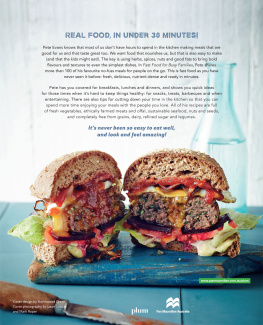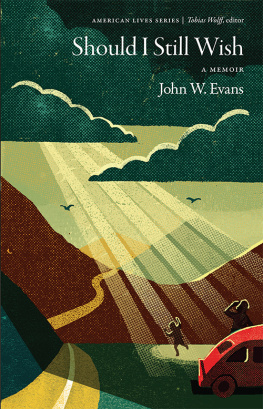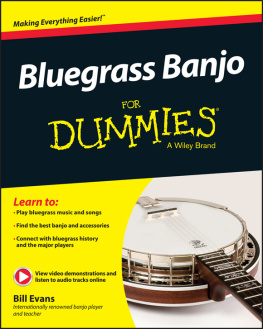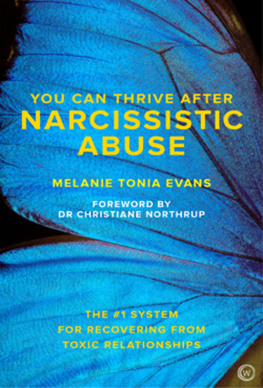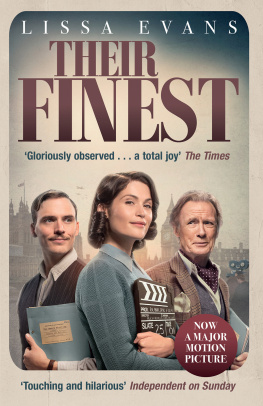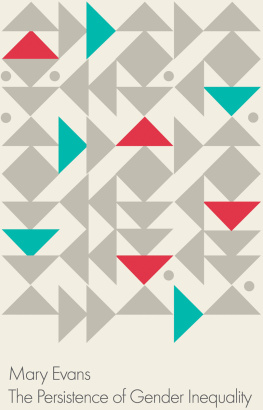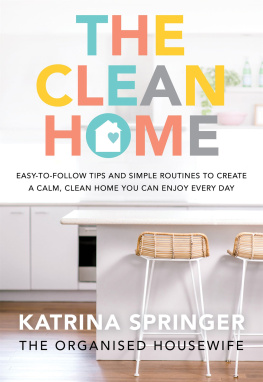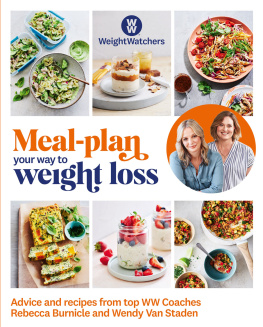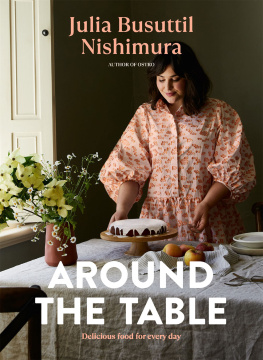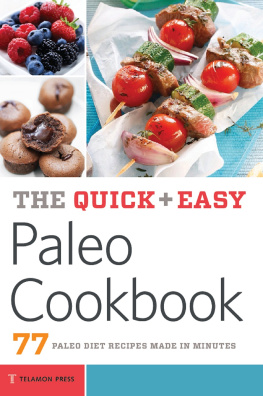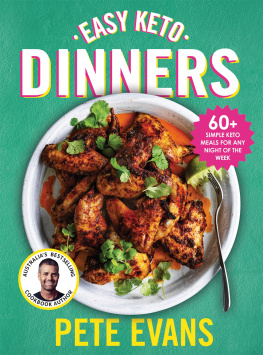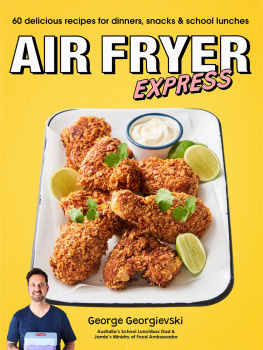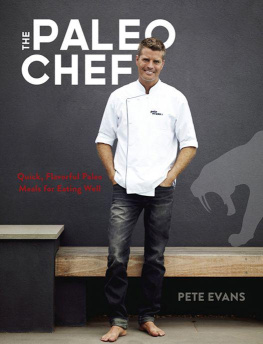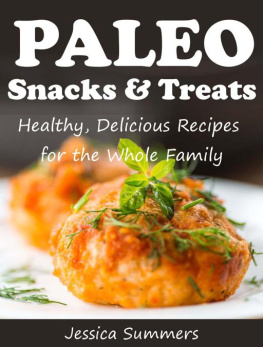Pete Evans is an award-winning Australian chef,
restaurateur, author, television presenter,
health coach, adventure seeker and father.
Hes one of Australias leading authorities on
healthy cooking and lifestyle and is dedicated
to improving peoples lives through education
about nutritional food and wellness. Pete is
co-host of Channel 7s hugely successful show
My Kitchen Rules and the host of his own series
The Paleo Way .
thepaleoway.com
facebook.com/paleochefpeteevans
instagram.com/chefpeteevans
This book is dedicated to all the
families who are on the path to
improved health and wellness.
No matter where you are on
your journey, every step forward
is a step in the right direction to
great health. Our children are
the future, so lets ensure they
have the very best nutritional
foundation to lead our country
back to optimal health. Together
we have the power to make a
massive change.
Contents
Introduction
Ready, set, cook!
Handy equipment
BREAKASTS
KIDS' LUNCHES
SALADS
MAIN MEALS
SIDES
TREATS
BASICS
Glossary
Thank you
Index
INTRODUCTION
Firstly, for those of you who are new to paleo, I want to thank you for having the
courage to take the fi rst steps to a long and healthy life. And for those of you who
have been on this path for a while now, thank you for your commitment to this
healthy lifestyle and for being part of a movement that is taking Australia and New
Zealand by storm.
Over the last few years I have been so fortunate to travel and teach people the
simple premise of living the paleo way through our international stage shows,
The Paleo Way television series, magazines, cookbooks and social media. We now
have over 1 million Facebook followers and each and every day we share another
remarkable story of someone who has transformed their life by following the paleo
way principles. Each story brings a tear to my eye. So many of these people have
lived with pain, lack of energy or low self esteem, and all it took were some simple
changes to their diet and lifestyle for them to reclaim their health.
The paleo way has now defi nitely hit the mainstream, which is a great sign as it
means that people are switching over to this lifestyle through word of mouth from
friends and family. However, there is still a lot of misunderstanding about what a
paleo lifestyle involves, so for those of you who are unsure or who are new to this
way of living, let me explain it as simply as I can.
Eating the paleo way is about embracing real foods and eliminating any foods
that may cause infl ammation in our bodies. The most common culprits for this
are gluten (and grains), legumes, dairy, toxic oils (such as seed and vegetable
oils) and refi ned sugars. If you have an auto-immune issue, you may also consider
eliminating nightshade vegetables (such as tomatoes, eggplants, capsicums and
potatoes), nuts and eggs for a period of time too to see how that impacts your
health.
So what foods do we embrace? Youll be pleased to know that there is an
abundance of natural and delicious foods to include in your diet. Here are our
recommendations:
Eat up to a palm-sized portion of animal protein at every meal. Focus on
sourcing protein from animals that have had a natural diet, such as grass-fed
beef, wild-caught seafood, free-range and pasture-raised poultry and pigs,
and wild game.
Enjoy an abundance of organic vegetables, with a preference for the least
starchy varieties.
INTRODUCTION
Include good-quality fat from avocados, olives, nuts, seeds, eggs and
animals in your daily diet.
Include bone broth in your daily diet for good gut health. You can drink
bone broth straight up, or add it to soups, curries or braises.
Add a spoon of fermented vegetables to every meal if possible. Start off
with a teaspoon a day, then work your way up to about a tablespoon or
two per meal.
As with any dietary changes, always consult your health professional and inform
them of your intentions to make sure they feel it is safe for you, taking into
account your overall health and any medical conditions that you may have.
Luckily, more and more doctors are promoting this way of life for their patients,
which is wonderful to see.
So, why this book? Well, it is a result of listening to you. As I mentioned before,
I love meeting, talking and connecting with people all over the world, and the
thing that I most often get asked for help with is quick and simple paleo recipes
that the whole family will love. We all live extremely busy lives and most of us
need to put food on the table seven nights a week. When we are in a rush and
feeling stressed, we need nourishing meals that can be made in less than an
hour. When first transitioning to a paleo way of eating, its often easier to start
with cooking paleo versions of meals that are familiar family favourites. So, I have
channelled my 25 years of experience as a chef into creating paleo versions of
spaghetti and meatballs, burgers, rolls, roasts, curries, breakfast cereals and
desserts, because these are the dishes that kids especially are comfortable with
and ones that will get requested again and again. I love it when I hear from a
reader that their family enjoyed one of my paleo recipes so much that they now
cook it every single week. I love it even more when I hear that these recipes have
transformed their childrens relationship to mealtime and that meals are once
again a joyous occasion.
I have also included some offal dishes to take you out of your comfort zone! This
incredibly nutrient-dense food is something that many Western people steer
clear of, which I think is a real shame. If you are not fond of offal I have offered
alternatives, but I also encourage you to challenge yourself to eat something
new from time to time. Check out the crumbed chicken liver nuggets on page
to see what I mean about people discovering the pleasure of something they
thought was icky!
With this book, I want to show you that paleo does not have to be difficult. It
can be as simple as a piece of pan-fried fish with a salad, a roast with veggies or
a bowl of chicken and vegetable soup. But there are also many other ways you
can save time in the kitchen and make cooking a whole lot easier for yourself. My
number one piece of advice is to invest in a chest freezer if you have the space,
INTRODUCTION
so that you can store leftover meals. Buy a heap of containers, then double or
triple the recipes and freeze them for another time. If you have healthy food on
hand you are less likely to make poor food choices. And youll also have more
time to spend with your family and friends doing the things you love.
I also recommend shopping locally and seasonally whenever you can. Cultivate
a relationship with local farmers, greengrocers and butchers. When you fi rst
start out, try to write a meal plan at the start of every week. Do most of your

